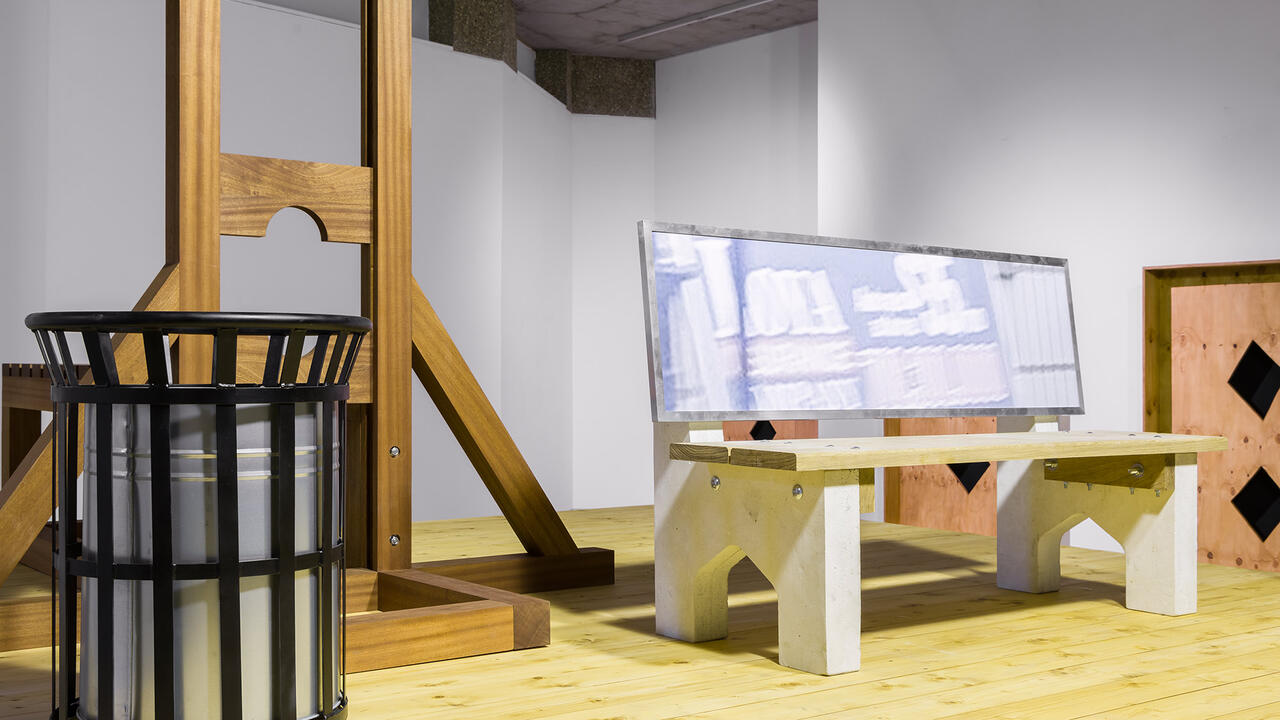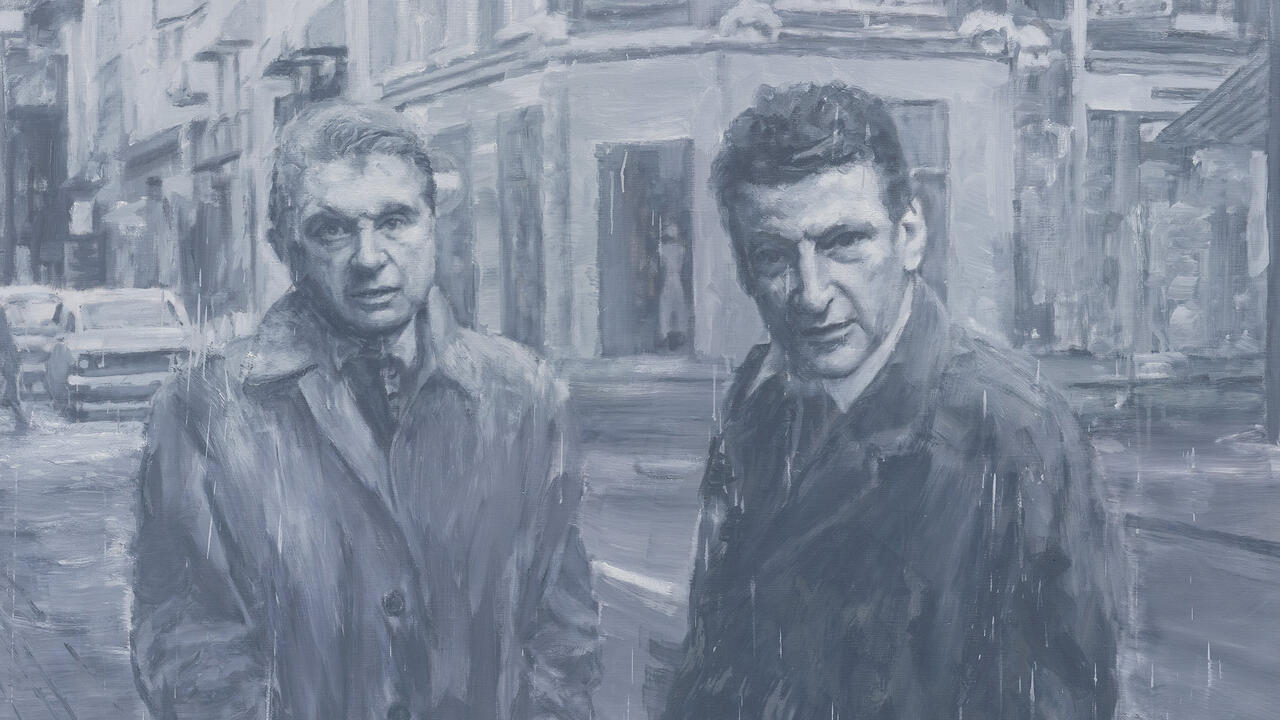Crash: Homage to J.G. Ballard
Gagosian Gallery, London, UK
Gagosian Gallery, London, UK

Dystopia is a man’s world – or so ‘Crash: Homage to J.G. Ballard’ would have had you believe. While insinuating that sex and death are predominantly male concerns may be a little ridiculous, such an approach was unsurprising given that the exhibition mainly consisted of artists with a relationship to Gagosian Gallery (which represents few women). Curated by Mark Francis and Kay Pallister, ‘Crash’ focused on the car-wreck fetishism of Ballard’s eponymous 1973 novel – which the writer described as his ‘most important book’ – more explicitly than on other aspects of his oeuvre. But, given the breadth and depth of Ballard’s writing (which was produced over the course of more than 50 years), why is he so often only celebrated as the author of dystopian-minded, sex-obsessed science fiction? Deviating little from this now-familiar reading, the large galleries of Gagosian’s Britannia Street space were crowded with an enjoyable cacophony of 52 artists’ works illustrating ‘Ballardian’ themes – an adjectival catch-all now applied to anything from mild social unrest to full-on apocalypse.
Ballard, who died in April last year, was an uncompromising visionary with an uncanny sense for the Zeitgeist and a terrifying intuition for catastrophe; he has been credited with anticipating the failure of the high-rise, the media obsession with celebrity, the apocalypse of global warming and even the Internet. But most striking is the aesthetic rigour he employed when describing form and surface – banal suburban vistas are visualized with the same detail as an explicit sex act, vivid landscapes of interwoven forms. Ballard also believed that exhibitions could convey entire paradigms, describing ‘This is Tomorrow’, at the Whitechapel Art Gallery in 1956, as ‘among the most radical statements of the human imagination ever made’. All of which is a lot to live up to.
‘Crash’ combined plenty of 20th-century heavyweights with eclectic offerings by a younger generation – from a melancholic Edward Hopper to Roger Hiorns’ crystallized engines – to form a jarring, potent combination. Works by Francis Bacon, Richard Hamilton, Roy Lichtenstein, Gerhard Richter and Andy Warhol hung overlooking the body of a matt-black car (Richard Prince’s Elvis, 2007). Ballard himself created a number of works as an artist, including an installation of crashed cars at the New Arts Laboratory, London, in 1970, which he described as ‘an art show designed to carry out a psychological test [...] about our unconscious fascination with car crashes and their latent sexuality’, that received a ‘wildly drunken reaction’. (At the opening, Ballard employed a topless model to interview visitors.) Here, Prince’s Wayward Nurse (2006–10) – a doe-eyed blonde in a bloodied uniform, in front of the words: ‘A private nurse learns the naked truth about men’ – was hung beside Warhol’s Green Disaster (Green Disaster Twice) (1963).
Mike Nelson’s Preface to 2004 Edition (Triple Bluff Canyon) (2004), a series of foyers to an imaginary working-men’s club, linked two of the galleries. Complete with dust, fire exits and the smell of old carpet, its inclusion subtly addressed Ballard’s eye for detail and interest in bland suburban architectures that are passed through unnoticed. Ballard once claimed in an interview that ‘reality was a stage-set’, and his protagonists often behave as though they were performing their lives – particularly in Crash, where an architecture of mangled cars and bodies is painstakingly choreographed and re-enacted. This idea was alluded to in highly stylized photographs by John Hilliard and Jemima Stehli, as well as by four typical Helmut Newton prints of nude models posing in medical supports (though these were closer to David Cronenberg’s 1996 film version of car-crash chic). Cindy Sherman’s Untitled #253 (1992) provided a wry contradiction to the masochism of Newton and the other sexual stereotypes of women in the exhibition. A decapitated female dummy reclined on shiny red silk, a rubber apron of breasts hanging from her neck, her head placed upside down in her crotch, hand guiding its mouth in an act of self-service.
Rather than dystopia or science fiction, Ballard created a form of hyper-reality, penetrating the surface of daily existence to reveal the psychological underbelly of contemporary society. As such, the exhibition’s real highlights were works by his peers who shared Ballard’s prescience and savvy cultural understanding, such as Eduardo Paolozzi’s ‘General Dynamic F.U.N’ (1965–70) – a series of sharp, subversive prints, playing with the iconography of mass-culture – and Richard Hamilton’s Hers Is A Lush Situation (1958), a glorious anthropomorphic automobile.
Ballard’s interest in Surrealism was also explored with works by Giorgio de Chirico, Salvador Dalí and Paul Delvaux – artists he described as ‘painters of mysterious and disconnected landscapes’ – as well as A Hard Working Family is the Opium of the People (1962), a darkly humorous drawing of a ‘family’ in various sexual positions by Hans Bellmer. The latter work would have doubtless drawn a slew of complaints if shown in a museum today, but then ‘Crash’ could never have been organized by a public institution – only a gallery with Gagosian’s clout could finance and realize such an exhibition in so short a space of time.
The power of Crash is that it addressed a quest for immediacy that, almost 40 years on, is still pervasive, exploring modernity’s need for extreme experience in order to really feel. This idea is pinpointed by Jeremy Deller in Another Country (The Mall London 3/9/97) (1997), in which photographs of the public’s tributes following Princess Diana’s death are presented alongside a poem by Deller, to address the collective hysteria that ensued. As for the success of the exhibition at addressing this feeling or Ballard’s wider legacy? Well, imagine if Pop met Surrealism at a Ballard-themed party, they had intense sex in Richard Prince’s car, but then Surrealism fell for a Helmut Newton model in a back-brace, leaving Pop to seek solace in the glossy machismo of youth, eventually finding comfort in the trotters of Paul McCarthy’s animatronic pig. It's a cocktail that Ballard would surely have enjoyed – but an opportunity to delve any deeper has perhaps been missed.
























